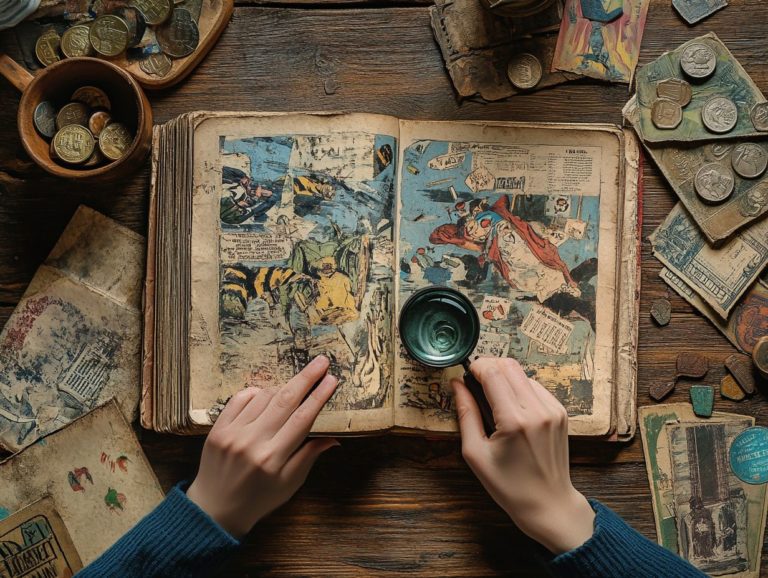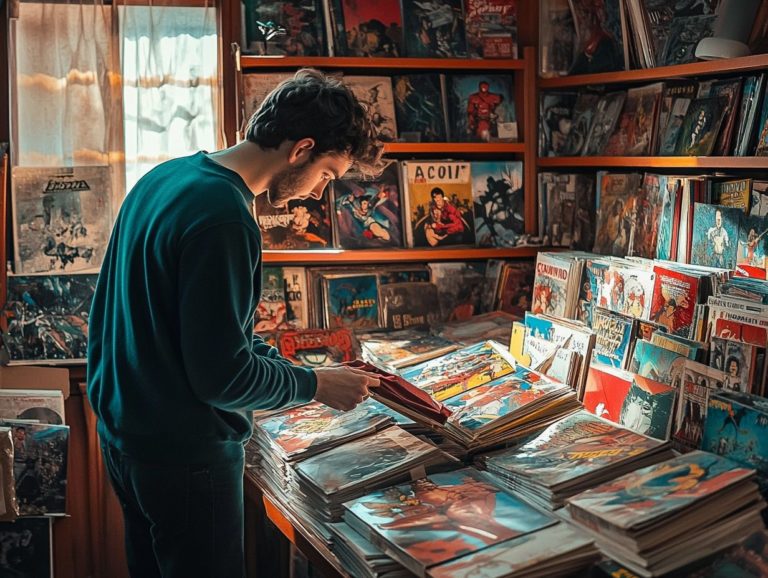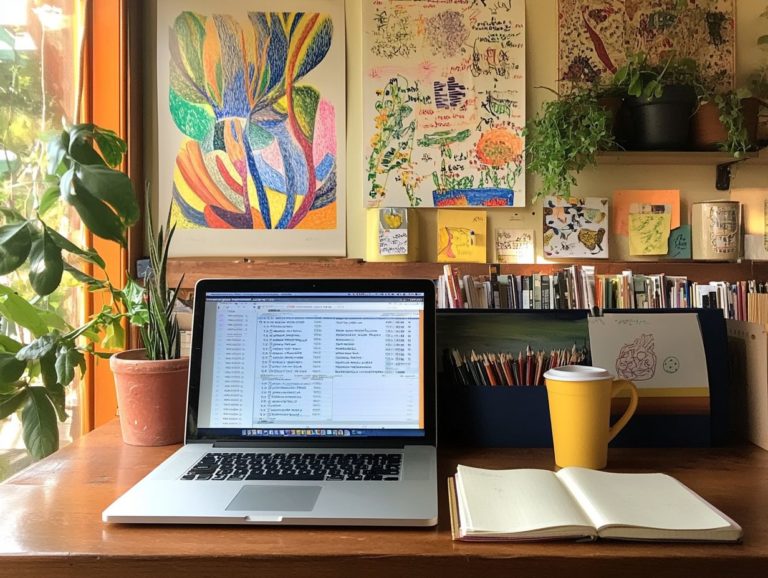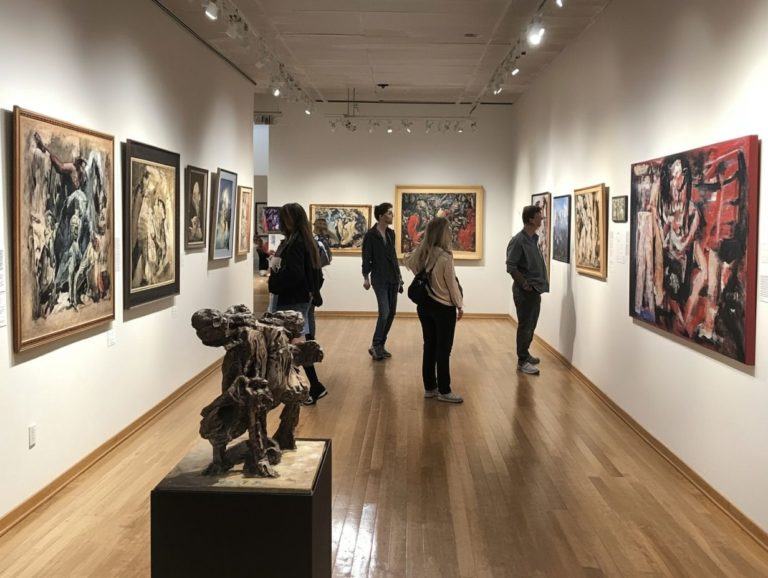How to Protect Your Art Investments
Art investing presents a complex process that merges your passion with sound financial strategy.
This article explores what defines an art investment and the various types available to discerning collectors like you. It outlines essential factors to consider, such as market trends and authentication, to ensure your investments are both strategic and secure.
Protecting your art, maximizing returns, and diversifying your portfolio are vital topics that empower you to navigate this unique market with confidence.
Join us as we unveil the nuances of art investments, equipping you with the insights needed to make informed decisions and elevate your collection.
Contents
- Key Takeaways:
- Understanding Art Investments
- Factors to Consider Before Investing in Art
- Protecting Your Art Investments
- Maximizing Returns on Art Investments
- Diversifying Your Art Portfolio
- Frequently Asked Questions
- How can I protect my art investments from damage?
- What insurance options can protect my art investments?
- Do I need to appraise my art to protect my investments?
- How can I ensure my art investments are authentic?
- What legal aspects should I consider for my art investments?
- How can I shield my art investments from market fluctuations?
Key Takeaways:
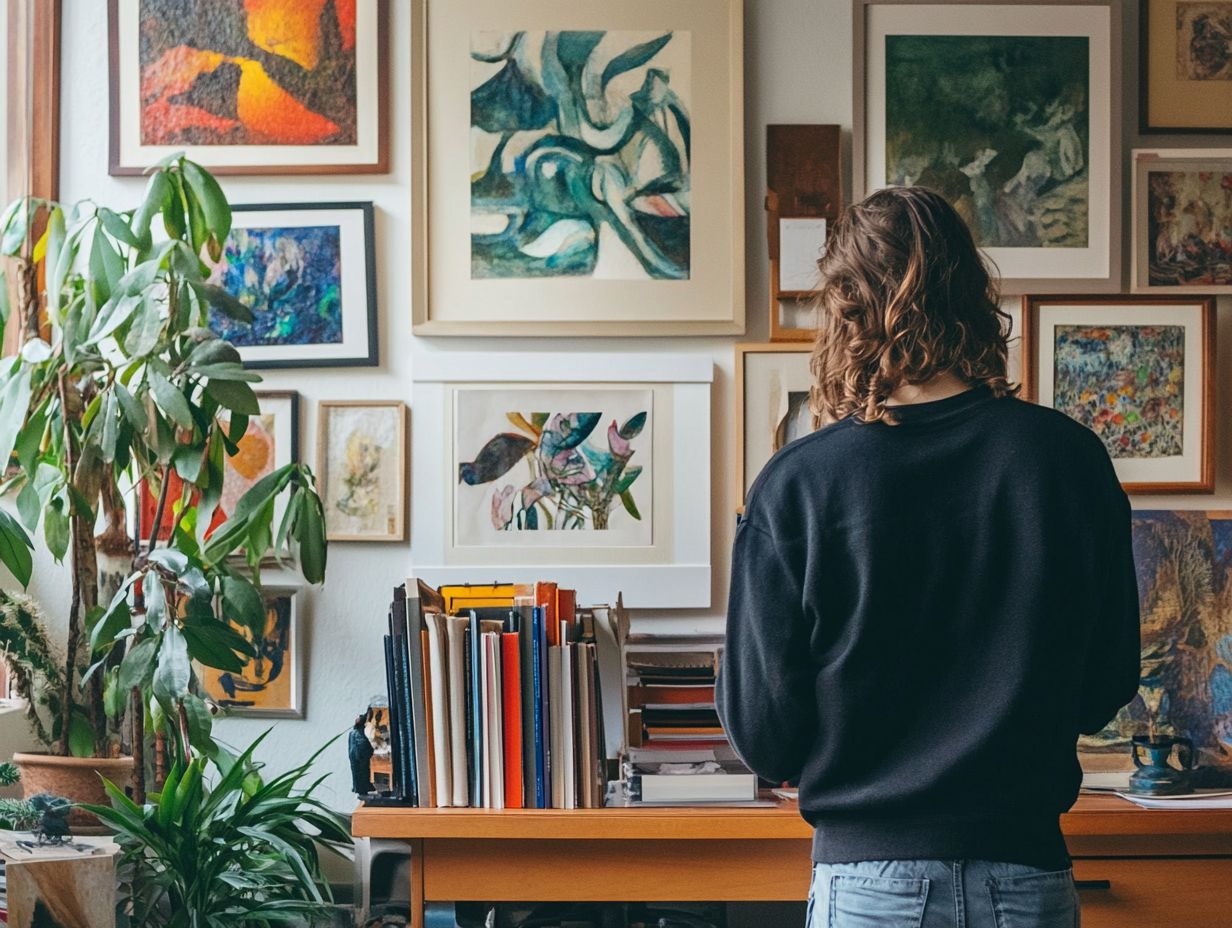
Know what art investments are and explore the different types available.
Keep an eye on market trends and ensure that your art is properly stored and insured.
Understanding Art Investments
Understanding art investments is crucial for both collectors and investors. It involves many factors, including market trends, artwork valuation, and the financial implications of ownership.
Recognized as a legitimate investment class, art offers unique opportunities for diversifying wealth, especially in today s unpredictable financial landscape.
By evaluating the market performance of different artworks, you can skillfully navigate auctions, utilize online resources, and make informed investment decisions that promise both cultural enrichment and financial appreciation.
What is an Art Investment?
Art investment involves acquiring artwork with the expectation that its value will appreciate over time, allowing you to reap financial rewards. This venture goes beyond aesthetics and includes critical elements like authenticity, which ensures the purchased piece is genuine and attributed to the correct artist.
Understanding ownership rights is crucial for securing your investment! As a prospective investor, you must grasp the legal implications of buying art. Additionally, knowing how to start a collectible art portfolio can help you investigate potential financial gains driven by market trends, historical significance, and an artist’s growing reputation, all of which can significantly affect the artwork’s value.
These factors enhance the allure of art investment, transforming it from a simple passion into a smart financial strategy.
Types of Art Investments
A diverse world of art investments awaits you, ranging from traditional masterpieces to contemporary photography. Each offers unique opportunities as a collector and investor.
In this rich landscape, fine art stands as a classic favorite, often showcasing timeless pieces that appreciate in value over decades.
Conversely, contemporary art unveils a dynamic realm filled with innovative styles that resonate with today’s audiences. This can yield remarkable returns in the fiercely competitive auction space.
If you’re looking to diversify your portfolio without owning physical pieces, art funds offer a structured approach that simplifies the process.
This variety underscores the importance of different artwork categories and attracts a wide array of collectors, each motivated by unique tastes and investment strategies.
Factors to Consider Before Investing in Art
Before you embark on art investments, grasping several key factors that can greatly impact your venture’s success is crucial.
Consider market trends, the demand for specific artworks, and the authentication processes that safeguard your collection’s value. Understanding these elements, as detailed in the intersection of art and investment, empowers you to make informed decisions and enhance your investment strategy.
Ready to dive into the world of art investing? Explore specific platforms and guides to kickstart your journey today!
Market Trends and Demand
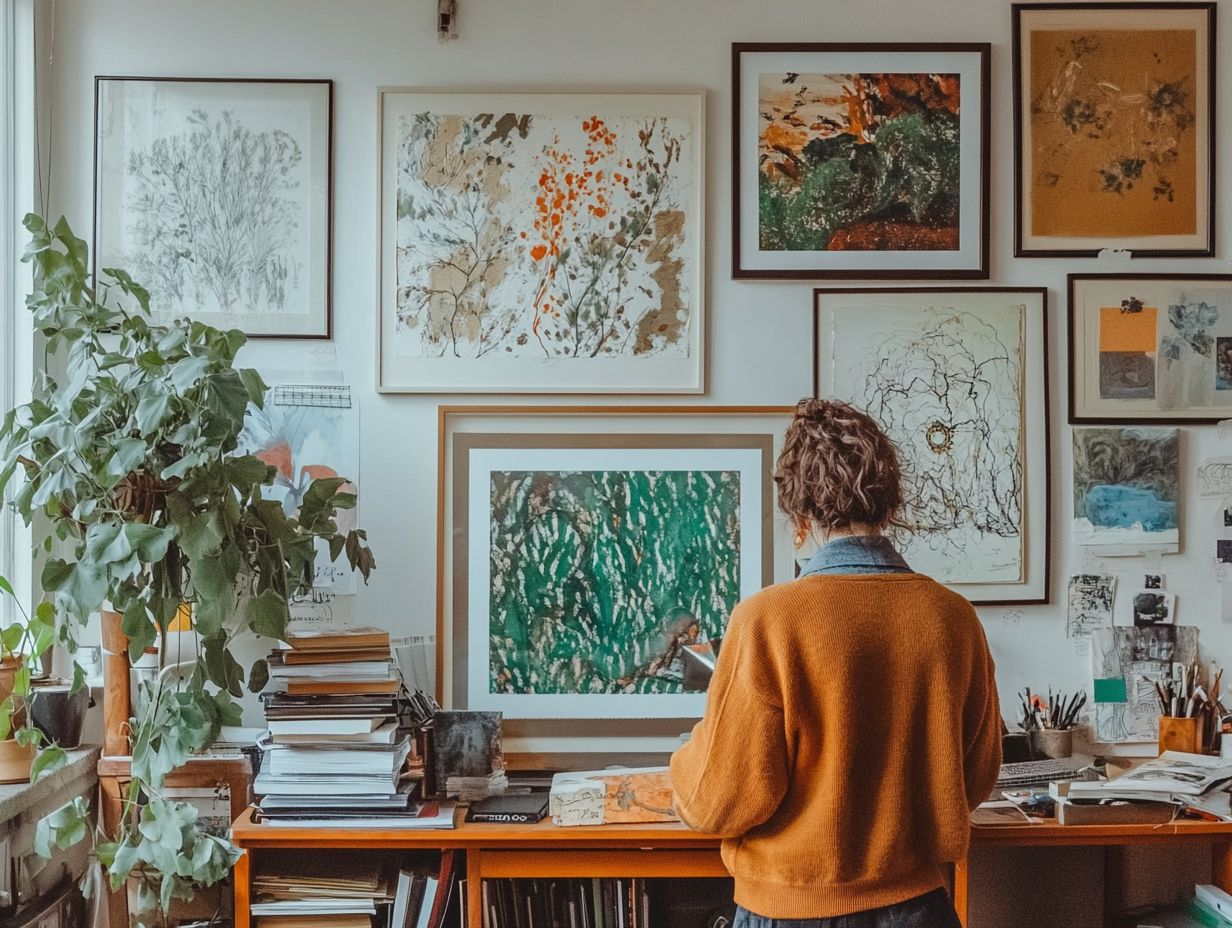
Market trends and demand shape the prices and allure of various artworks for collectors and investors alike.
As the art investment landscape evolves, factors like auction results and shifts in collector interests increasingly steer market dynamics.
For instance, when demand for contemporary pieces surges, significant price fluctuations at auctions often occur, reflecting the ever-changing tastes of buyers.
Social media and online platforms have transformed the art world, making it more accessible and broadening the audience. This encourages collectors to diversify their portfolios.
By understanding these market forces, you can make informed decisions. This ensures your investments resonate with you personally and possess potential future value.
Authentication and Provenance
Authentication and provenance are essential in the art investment landscape. They validate authenticity while significantly influencing value in the eyes of collectors.
A solid provenance can enhance an artwork’s allure, weaving a captivating narrative of its history that prospective buyers find irresistible.
When you can trust an artwork’s legitimacy, your confidence in making a purchase naturally escalates. This fosters a greater willingness to invest substantial sums.
Clear ownership rights are paramount; without well-defined provenance, disputes can emerge. This potentially discourages collectors from pursuing pieces lacking proper documentation.
Ultimately, authentication and provenance are key to value and stability in the ever-evolving world of art.
Protecting Your Art Investments
It’s crucial to protect your art investments; act now to ensure they thrive! A thoughtful approach to safeguarding your art includes strategies for reducing risk in art investments, as well as securing the right insurance and careful handling and storage practices.
By prioritizing these strategies, you can keep your artworks in pristine condition for years to come.
Insurance Options
When you invest in art, a range of insurance options tailored for collectors awaits you. Additionally, it’s important to consider how to protect your precious metal investments to safeguard against potential risks like damage, theft, or loss.
For example, explore specialized policies that cater to fine art. They offer coverage that spans everything from accidental damage during transit to catastrophic events like fire or flooding.
- The cost of these policies can vary widely.
- Factors influencing costs include the artist’s reputation, the artwork’s provenance, and the overall value of your collection.
It s essential to grasp not only the financial implications but also the peace of mind that comes with securing appropriate coverage. This ensures your prized possessions are well protected against unforeseen circumstances.
Proper Storage and Display
Proper storage and display of your artwork are essential for preserving its condition and value. You should consider environmental factors like humidity and temperature crucial elements in preventing deterioration that could cause irreversible damage.
To ensure optimal preservation, store your artwork in cool, dry environments with stable temperatures ideally between 60-70 F and humidity levels around 40-50%.
When showcasing your art, use UV-filtering glass to shield it from harmful sunlight and choose appropriate framing to defend against dust and pollutants.
Always handle your pieces with clean, dry hands or gloves to minimize contact with surfaces. Regular dusting and careful cleaning with approved materials will further enhance the longevity and beauty of your treasured artworks.
Maximizing Returns on Art Investments
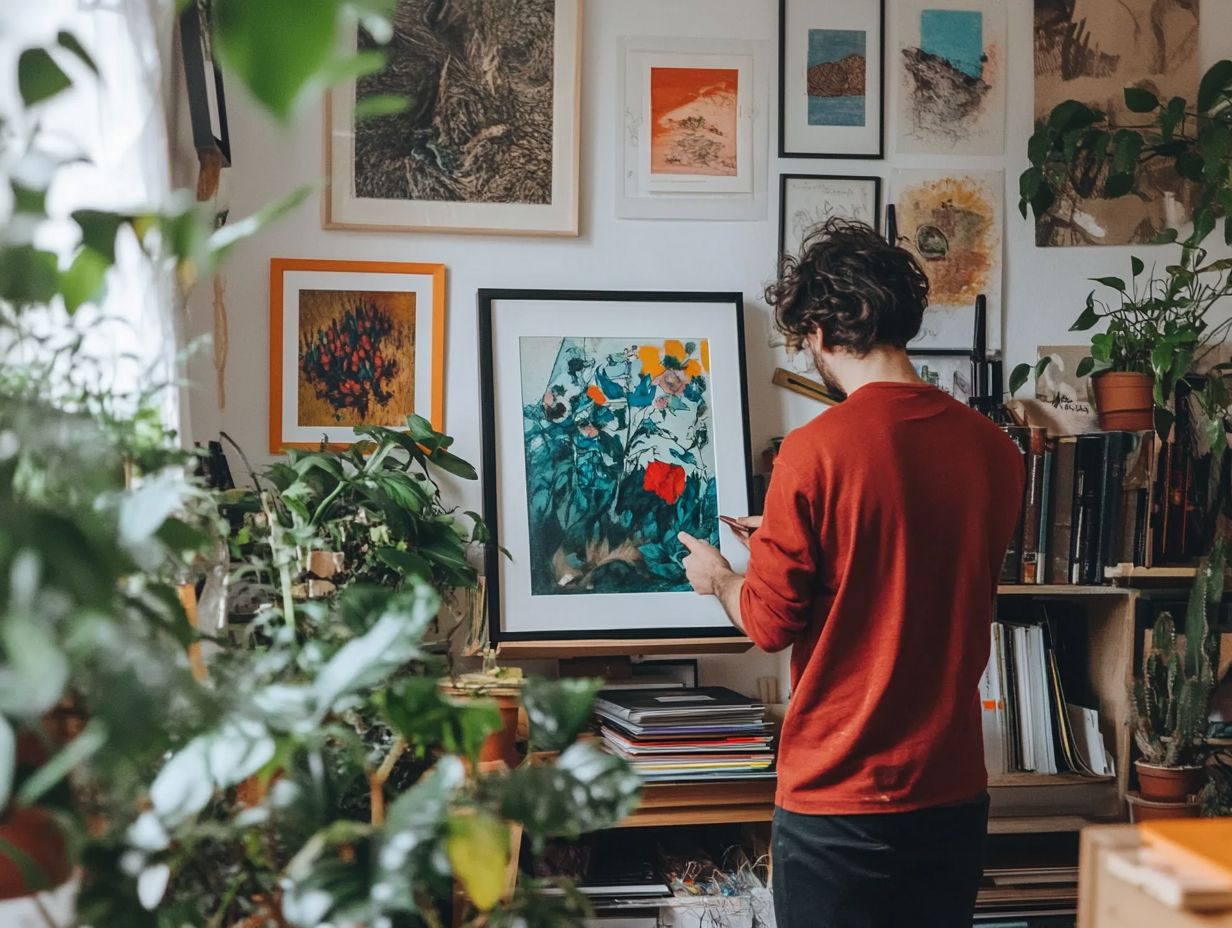
Maximizing returns on your art investments demands strategic planning and knowledge-based decision-making. By doing so, you can capitalize on the appreciation of your artworks over time.
Leverage sophisticated selling and investment strategies to enhance your portfolio’s value.
Strategies for Selling Art
Implementing effective strategies for selling art is essential if you re looking to maximize your investments. Whether you choose auction houses, galleries, or private sales, understanding the nuances of each approach can significantly impact market dynamics.
For example, auction tactics often create a buzz. This generates excitement and competition that can drive prices higher as enthusiastic bidders compete for a prized piece.
Gallery representation allows you to build a loyal collector base. It fosters a professional environment that emphasizes quality and curation. Private sales offer a discreet avenue where you can negotiate terms without public scrutiny, catering specifically to your tastes.
By exploring these diverse selling strategies, you can enhance your experience and navigate the complexities of the art market more effectively.
Long-Term Investment Planning
Long-term investment planning is essential for art collectors and investors. It can enhance the performance of your art portfolio while helping you navigate the ever-evolving market landscape.
In the dynamic realm of art, grasping the many factors that influence an artwork’s value is crucial. Elements such as the artist’s reputation, historical significance, and current trends can significantly impact your investment’s worth.
Conduct thorough research to make informed decisions and consider diversifying your collection to mitigate risk. To assist in this process, you should think about what to consider before investing in art. Regular appraisals, attending art fairs, and cultivating relationships with gallery owners can further enhance your potential returns.
By adopting a long-term perspective, you can manage fluctuations more effectively. This ensures that your collection appreciates in value while providing you with lasting enjoyment.
Diversifying Your Art Portfolio
Diversifying your art portfolio is a crucial strategy for managing risks while maximizing potential returns. It enables you to explore various styles, mediums, and even discover emerging artists within the contemporary art landscape.
This approach opens up an exciting world of art, making your collection even more vibrant!
Exploring Different Types of Art
Exploring different types of art is essential for collectors aiming to build a diverse portfolio. It opens the door to a broader appreciation of various styles and mediums, ranging from traditional paintings to contemporary photography.
This diversity enriches your understanding of the art world and enhances your potential for financial gain.
Investing in sculptures gives you unique three-dimensional pieces that truly stand out in your collection. Collectible prints allow you to access works by renowned artists without the high price tags of original pieces.
Emerging genres like digital art are rapidly gaining traction, presenting innovative avenues for investment. By incorporating a variety of artistic expressions, you can mitigate risks and ensure your investments remain resilient against fluctuating market trends.
Investing in Emerging Artists
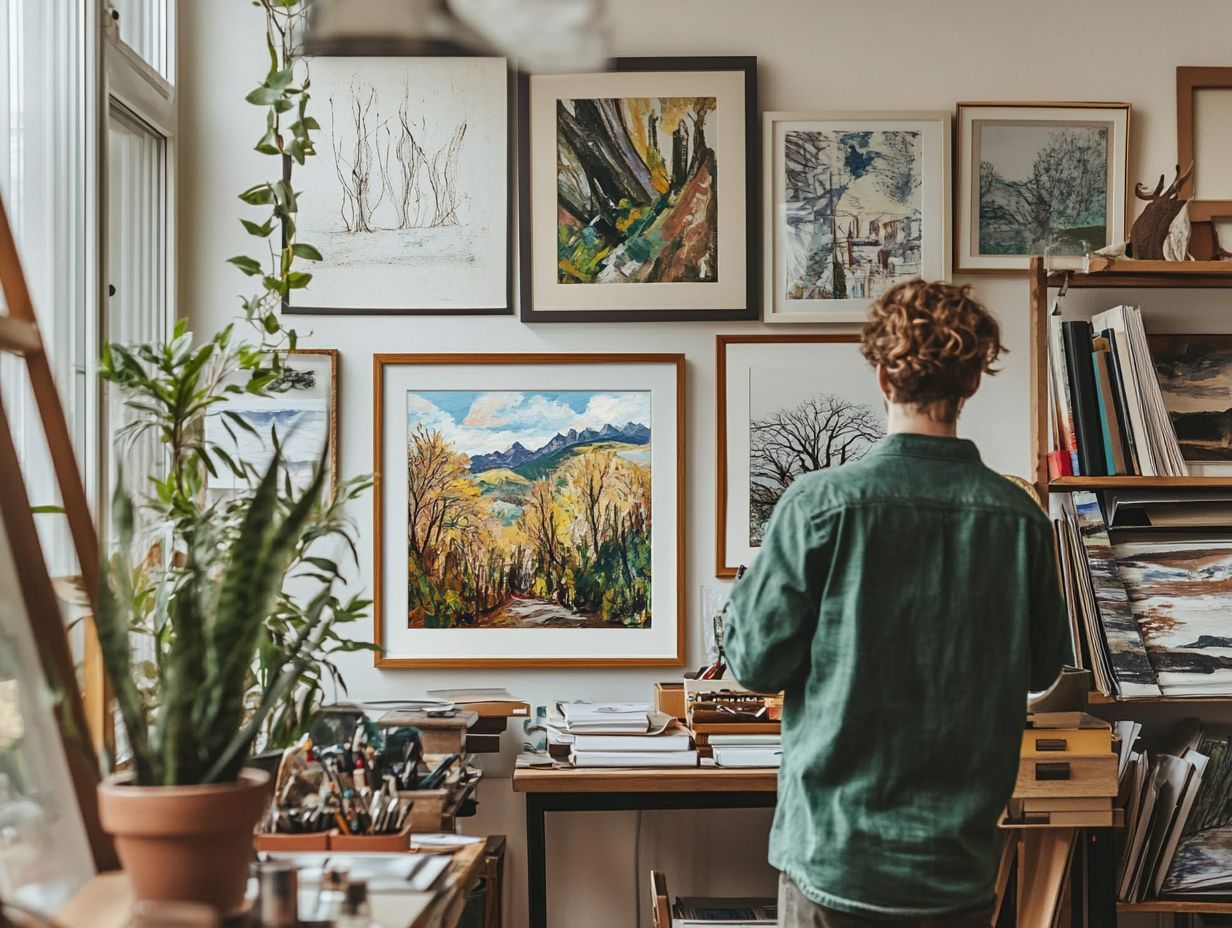
Investing in emerging artists offers a unique opportunity to support new talent while potentially reaping significant rewards as these artists gain recognition in the market.
In recent years, the art market has seen a rising trend that values fresh perspectives and innovative techniques. This makes it an exhilarating time for you as an investor.
Engaging with these talented individuals places you at the forefront of artistic evolution. You can cultivate a diverse portfolio that may appreciate in value as their careers advance.
Participating in this dynamic landscape enriches your experience as a collector. You play an active role in nurturing essential creative voices.
By recognizing the potential for growth, you not only influence the unfolding narratives of the art world but also contribute to the sustainability of the market itself.
Frequently Asked Questions
Here are some common questions about protecting your art investments:
How can I protect my art investments from damage?
One way to protect your art investments is by properly storing and displaying them. This includes keeping them in a climate-controlled environment and using archival-quality materials for framing and matting, as well as understanding the risks of art investments.
What insurance options can protect my art investments?
Several insurance options are tailored for art investments, like fine art insurance and art collector insurance. These policies cover damage, theft, and loss of value for your collection.
Do I need to appraise my art to protect my investments?
While not mandatory, professional appraisals give accurate valuations for your pieces and help with insurance. Regular appraisals are a smart move to keep up with changing market values.
How can I ensure my art investments are authentic?
Protect yourself from counterfeit art by researching thoroughly before buying. Verify the history of the piece and consult a trusted art advisor or dealer.
What legal aspects should I consider for my art investments?
Legal aspects like copyright laws, ownership rights, and tax implications are crucial for investors. To navigate these complexities, consult resources on understanding art valuation for investors and seek an art law specialist to safeguard your investments effectively.
How can I shield my art investments from market fluctuations?
Diversifying your collection helps protect against market swings. Invest in various styles, mediums, and artists to reduce risk and keep informed on market trends.

